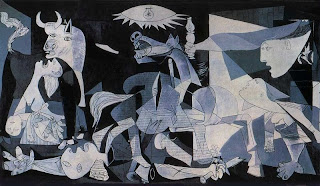Kalian semua tau kan, siapa itu Albert Einstein? Dia terkenal sebagai ahli fisika, filsuf, dan mungkin adalah ilmuwan yang paling berpengaruh yang pernah ada. Dia memberikan kontribusi yang besar di dunia sains. Dia mendapat nobel di bidang fisika atas temuan fisika nya dan terutama hukum efek fotoelektrik. Dia menghasilkan lebih dari 300 karya ilmiah dan lebih dari 150 karya non-ilmiah. Einstein disebut ayah fisika modern dan merupakan ilmuwan tersukses yang pernah ada.
Nah, ini adalah 10 nilai kehidupan dari Einstein.
1. Ikuti rasa keingintahuan mu!
"I have no special talents. I am just passionately curious."
Apa yang membuat mu penasaran? Apa yang menjadi rasa ingintahu mu? Pencarian dari keingintahuan mu adalah kunci untuk sukses.2. Tekun
"It's not that I'm so smart, it's just that I stay with the problems longer"
Apakah kamu berniat untuk terus tekun hingga mencapai tujuanmu? Jadilah seperti perangko, perangko akan tetap menempel pada sesuatu hingga mencapai tujuannya.3. Fokus dengan apa yang dilakukan sekarang
"Any man who can drive safely while kissing a pretty girl is simply not giving the kiss the attention it deserves.”
Kamu bisa melakukan APA SAJA, tetapi kamu tidak bisa melakukan apa saja di waktu yang sama. Berusahalah untuk fokus pada pekerjaanmu sekarang. Dan kerahkan semua kemampuanmu dalam menyelesaikannya.4. Kembangkan imajinasimu
"Imagination is everything. It is the preview of life's coming attraction. Imagination is more important than knowledge."
Gunakan imajinasimu! Jangan jadikan imajinasimu itu terbengkalai. Karena tanda dari kecerdasan itu bukan lah pengetahuan, tetapi imajinasi.5. Jangan takut berbuat salah
"A person who never made a mistake never tried anything new."
Kesalahan itu bukan berarti gagal. Kesalahan ini akan membuatmu semakin baik dan semakin pandai jika kamu menggunakannya dengan benar.6. Hiduplah di masa sekarang.
"I never think of the future - it comes soon enough."
Maksud dari hidup di masa sekarang adalah, kita tidak bisa mengubah masa lalu, dan kita tidak bisa mengetahui masa depan yang belum terjadi. Jadi yang paling penting dilakukan adalah bahwa kamu mengerahkan semua usahamu untuk yang ada 'sekarang'.7. Buat sesuatu yang bernilai
"Strive not to be a success, but rather to be of value."
Jangan habiskan seluruh waktu hidup mu untuk mencari kesuksesan. Habiskan waktu mu untuk melakukan sesuatu yang berharga. Jika kamu berharga, maka kamu akan dekat dengan kesuksesan.
Temukan bakatmu, dan salurkan bakatmu ke cara yang menguntungkan untuk orang lain.8. Jangan mengharapkan hasil yang berbeda
"Insanity: doing the same thing over and over again and expecting different results."
Kamu gak bisa melakukan hal yang sama setiap hari dan mengharapkan hasil yang berbeda. Kalau kamu mengharapkan sesuatu yang berbeda, maka ubahlah dirimu sendiri dulu dan maka hidupmu akan berubah.9. Belajar dari pengalaman
"Information is not knowledge. The only source of knowledge is experience."
Kamu harus merasakan sendiri suatu hal dan jangan cuma mengandalkan informasi nya saja. Tetapi harus dialami sendiri, maka kamu akan mendapatkan pengetahuan yang berharga.10. Pelajari aturannya dan lakukan yang lebih baik dari orang lain.
"You have to learn the rules of the game. And then you have to play better than anyone else.”
Sederhana saja. Pelajari aturan atau cara bermainnya. Setelah itu, kamu harus bermain lebih baik dari yang lainnya. Dengan begitu, kamu bisa meraih kesuksesan dengan mudah !Makasih udah mau baca artikel ini :)
dedicated for Albert Einstein










